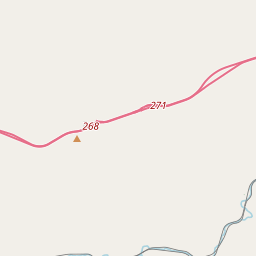Argenta Station
Historical marker location:
Carlin, Nevada
( Marker can be reached from Interstate 80, on the right when traveling west.)
Marker installed: 2006







© OpenStreetMap contributors
Nevada was once the world's largest producer of silver: In the late 1800s, Nevada was one of the world's largest producers of silver. The discovery of the Comstock Lode in 1859, a massive deposit of silver ore, led to a mining boom that transformed the state.
About Eureka County
Eureka County Timeline
Eureka County, located in the state of Nevada, has a rich history that dates back to the mid-1800s. The county was first settled in 1864 after the discovery of silver in the area. The town of Eureka, which quickly became the county seat, was established to support the mining industry.
During the late 1800s, Eureka County experienced a mining boom, attracting thousands of miners and entrepreneurs seeking fortune. The region's silver deposits were extensively mined, leading to the development of numerous mining camps and towns. Eureka became a bustling center of commerce with a robust economy driven by silver production.
The county faced several challenges in the early 20th century. The decline in silver prices and the exhaustion of some mining sites led to a downturn in the economy. However, Eureka County managed to adapt and diversify its industries. Agriculture, particularly cattle ranching, became an important sector, and the county's vast open spaces provided ample space for ranches and farms.
In recent years, Eureka County has embraced its mining heritage while also exploring sustainable alternatives. The county has seen a resurgence in mining activities, primarily in gold and mineral extraction, contributing to the growth of the local economy. Eureka County also aims to balance economic development with environmental conservation, making it an attractive destination for outdoor enthusiasts and nature lovers.
Overall, Eureka County's history is defined by its mining heritage, resilience, and commitment to sustainable growth. This small county continues to evolve and adapt, showcasing the spirit of the American West.
During the late 1800s, Eureka County experienced a mining boom, attracting thousands of miners and entrepreneurs seeking fortune. The region's silver deposits were extensively mined, leading to the development of numerous mining camps and towns. Eureka became a bustling center of commerce with a robust economy driven by silver production.
The county faced several challenges in the early 20th century. The decline in silver prices and the exhaustion of some mining sites led to a downturn in the economy. However, Eureka County managed to adapt and diversify its industries. Agriculture, particularly cattle ranching, became an important sector, and the county's vast open spaces provided ample space for ranches and farms.
In recent years, Eureka County has embraced its mining heritage while also exploring sustainable alternatives. The county has seen a resurgence in mining activities, primarily in gold and mineral extraction, contributing to the growth of the local economy. Eureka County also aims to balance economic development with environmental conservation, making it an attractive destination for outdoor enthusiasts and nature lovers.
Overall, Eureka County's history is defined by its mining heritage, resilience, and commitment to sustainable growth. This small county continues to evolve and adapt, showcasing the spirit of the American West.
Eureka County Timeline
This timeline provides a condensed summary of the historical journey of Eureka County, Nevada.
- 1873: Eureka County was established on November 18th, as one of the original nine counties in the state of Nevada.
- 1874: The town of Eureka was founded following the discovery of silver in the area.
- 1878: The Eureka Sentinel, Eureka County's first newspaper, was established.
- 1880: Eureka became the county seat, replacing nearby Ruby Hill.
- 1881: The Eureka Opera House was built, becoming a hub for entertainment in the area.
- 1891: The historic Eureka County Courthouse was completed, showcasing beautiful Victorian architecture.
- Early 1900s: The mining industry in Eureka County experienced a decline, leading to a decrease in population and economic activity.
- 1929: The construction of U.S. Route 50, known as "The Loneliest Road in America," brought new travel opportunities to the county.
- 1942-1945: During World War II, the town of Eureka was used as a base for training tank battalions.
- Late 20th century: Eureka County transitioned to a more diversified economy, including agriculture and tourism.
- Present: Eureka County continues to preserve its rich history while embracing new opportunities for growth and development.